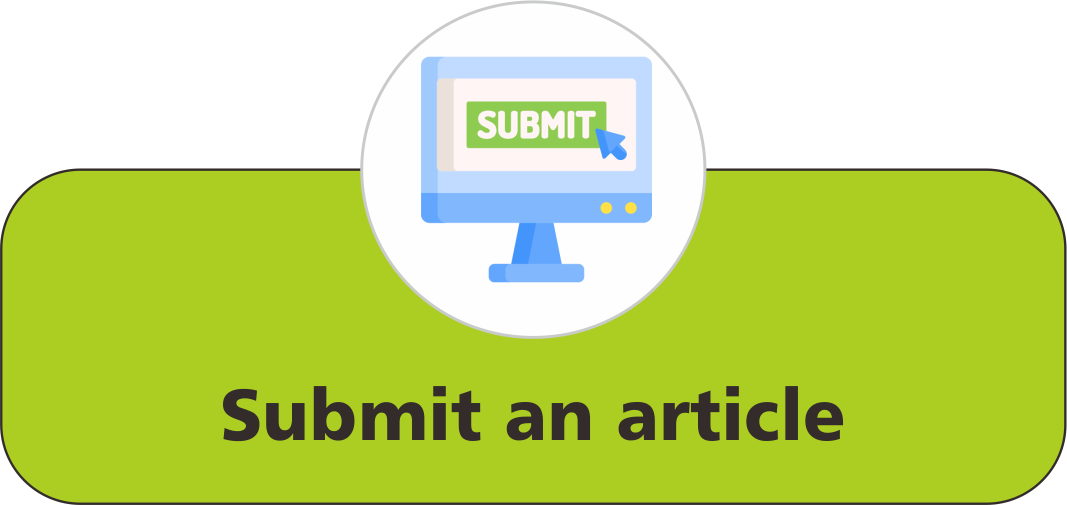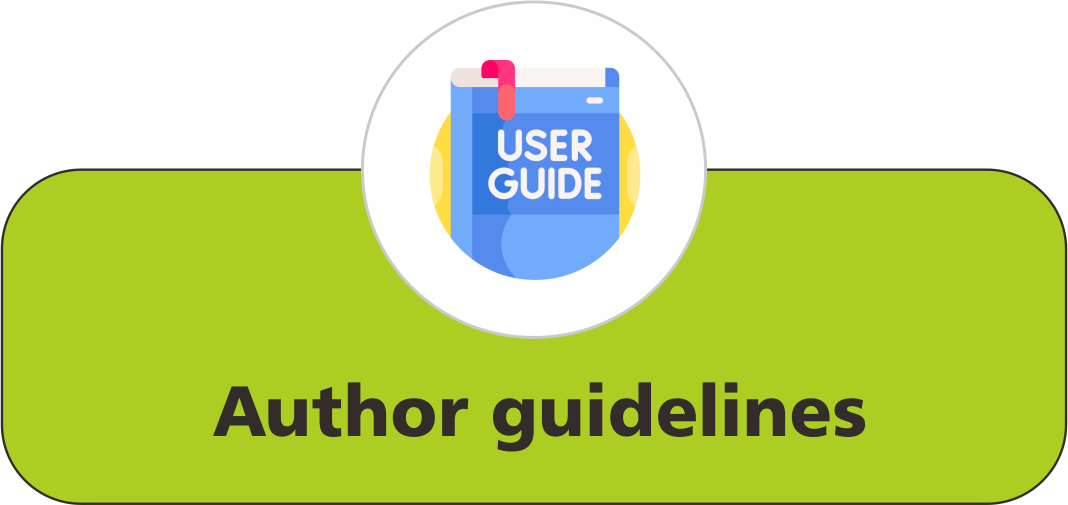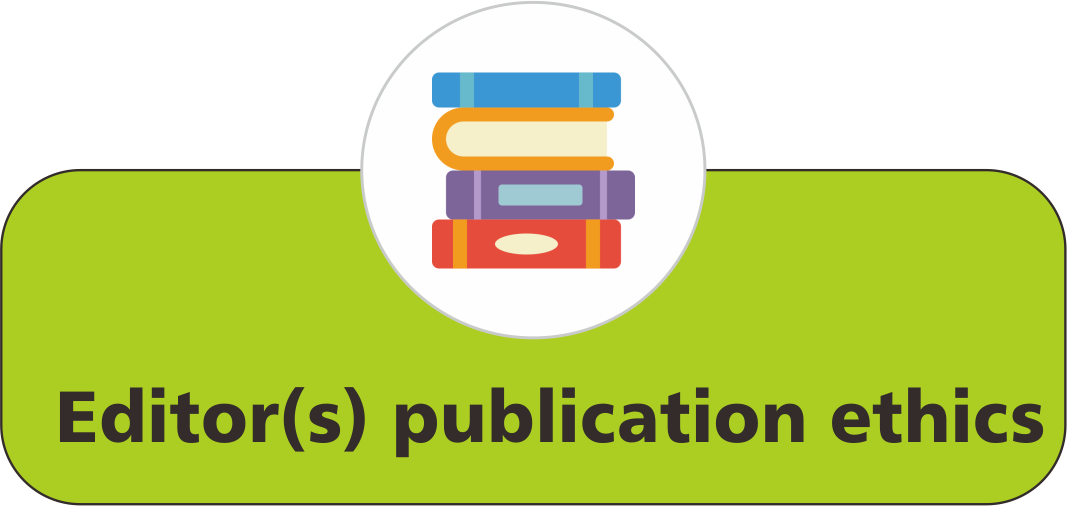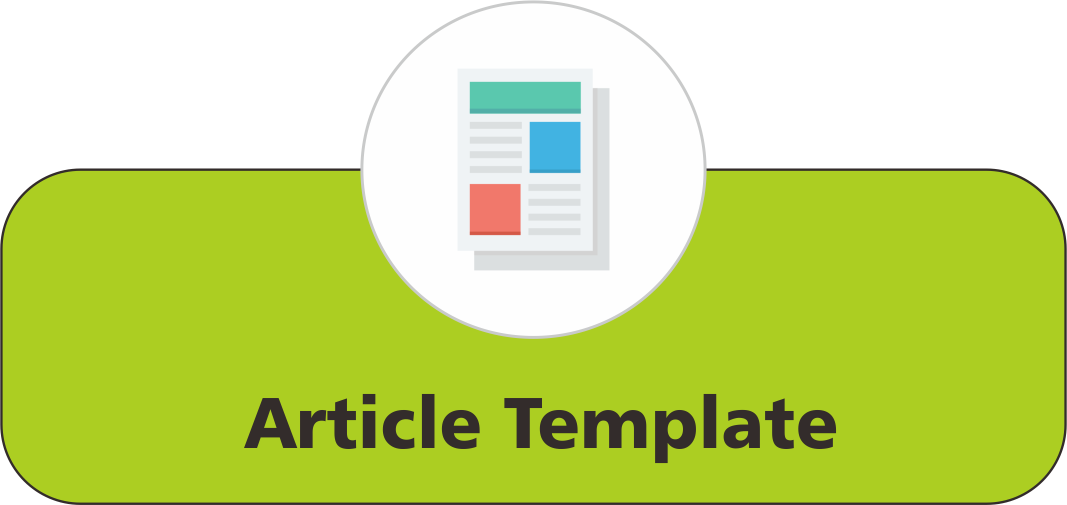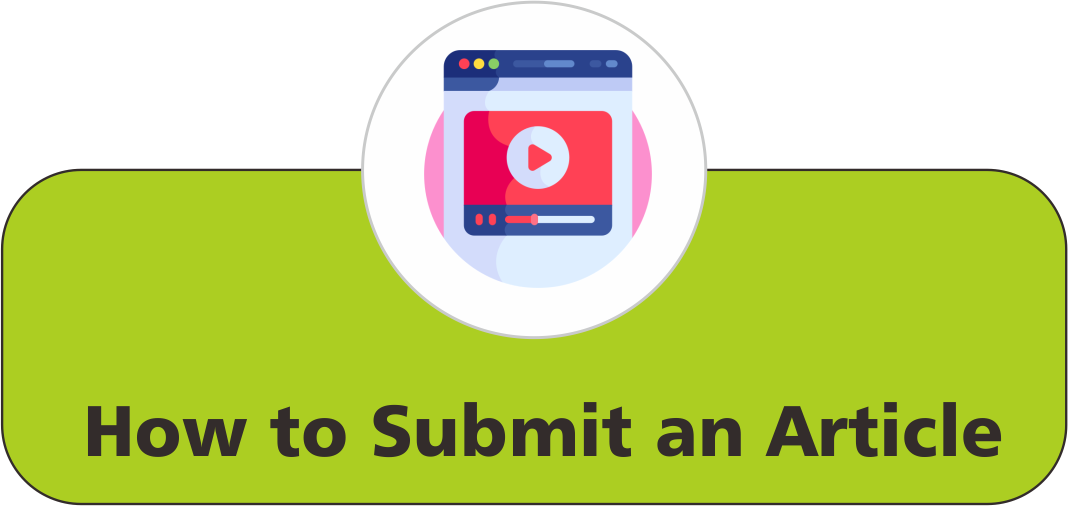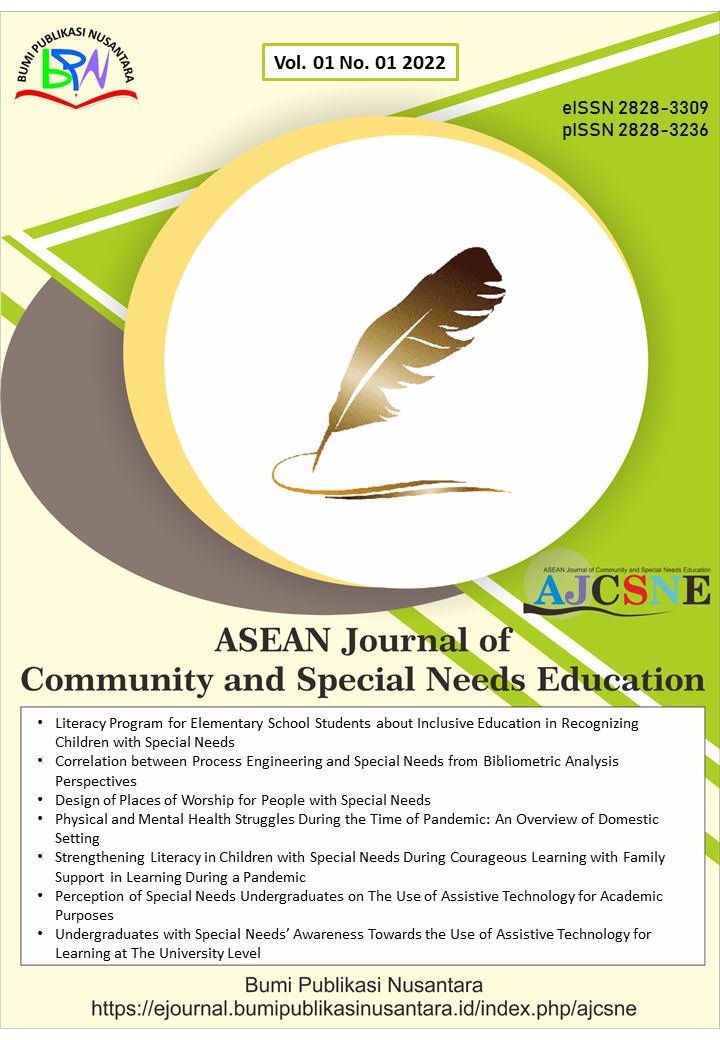Overcoming Barriers to Inclusive Education in New Uzbekistan: Challenges, Strategies, and Future Directions
 ), Boqiyeva Sevinch Elyorali(2), Axmadaliyeva Oʻgʻilcha Yusubjamol(3),
), Boqiyeva Sevinch Elyorali(2), Axmadaliyeva Oʻgʻilcha Yusubjamol(3),
(1) Chirchik State Pedagogical University
(2) Chirchik State Pedagogical University
(3) Chirchik State Pedagogical University
 Corresponding Author
Corresponding Author
Abstract
Keywords
References
Ainscow, M. (2016). Diversity and equity: A global education challenge. New Zealand Journal of Educational Studies, 51, 143-155.
Alston, P. (2005). Ships passing in the night: the current state of the human rights and development debate seen through the lens of the Millennium Development Goals. Human Rights Quarterly, 27(3), 755-829.
Barry, F., King, M., and Matthews, A. (2010). Policy coherence for development: Five challenges. Irish Studies in International Affairs, 21(1), 207-223.
Boeren, E. (2019). Understanding Sustainable Development Goal (SDG) 4 on “quality education” from micro, meso and macro perspectives. International Review of Education, 65, 277-294.
Fozilova, D., and Husain, M. (2024). Neoliberal Repercussions in Postsecondary Education Sector: A Comparative Case Study Between Uzbekistan and Bangladesh with Emphasis on Equity, Diversity, and Inclusion. European Education, 56(3-4), 226-242.
Glowacki-Dudka, M., Murray, J., and Concepción, D. (2012). Reflections on a teaching commons regarding diversity and inclusive pedagogy. International Journal for the Scholarship of Teaching and Learning, 6(2), 13.
Hasan, H., Smith, S., and Finnegan, P. (2017). An activity theoretic analysis of the mediating role of information systems in tackling climate change adaptation. Information Systems Journal, 27(3), 271-308.
Head, B. W. (2007). Community engagement: participation on whose terms?. Australian Journal of Political Science, 42(3), 441-454.
Ibraimova, A., Akkazieva, B., Murzalieva, G., & Balabanova, D. (2011). Kyrgyzstan: a regional leader in health system reform. Good Health at Low Cost, 25, 117-157.
Kaeane, N. L., and Molokomme, R. T. (2025). Navigating the new normal: Challenges in lecturers' adaptation to online learning at a South African university of technology post-emergency remote teaching. Edelweiss Applied Science and Technology, 9(2), 590-602.
Karou, S., and Hull, A. (2014). Accessibility modelling: predicting the impact of planned transport infrastructure on accessibility patterns in Edinburgh, UK. Journal of Transport Geography, 35, 1-11.
Khumalo, B., and Mji, A. (2014). Exploring educators’ perceptions of the impact of poor infrastructure on learning and teaching in rural South African schools. Mediterranean Journal of Social Sciences, 5(20), 1521-1532.
Kwok, K., and Kwok Lai Yuk Ching, S. (2022). Navigating stigma and discrimination: Experiences of migrant children with special needs and their families in accessing education and healthcare in Hong Kong. International Journal of Environmental Research and Public Health, 19(10), 5929.
Lerch, J. C. (2023). How global institutions matter: Education for all and the rise of education as a humanitarian response. Comparative Education Review, 67(2), 251-276.
Lukesch, R., Ludvig, A., Slee, B., Weiss, G., and Živojinović, I. (2020). Social innovation, societal change, and the role of policies. Sustainability, 12(18), 7407.
Madon, S., Reinhard, N., Roode, D., and Walsham, G. (2009). Digital inclusion projects in developing countries: Processes of institutionalization. Information Technology for Development, 15(2), 95-107.
Mäkinen, M. (2013). Becoming engaged in inclusive practices: Narrative reflections on teaching as descriptors of teachers' work engagement. Teaching and Teacher Education, 35, 51-61.
Manakov, A. G. (2021). Transformation of the ethnic space in countries of Central Asia in the post-Soviet period. Geography and Natural Resources, 42(2), 185-193.
Mukhopadhyay, S., Nenty, H. J., and Abosi, O. (2012). Inclusive education for learners with disabilities in Botswana primary schools. Sage Open, 2(2), 2158244012451584.
Onyishi, C. N., and Sefotho, M. M. (2020). Teachers' perspectives on the use of differentiated instruction in inclusive classrooms: Implication for teacher education. International Journal of Higher Education, 9(6), 136-150.
Ozga, J., and Jones, R. (2006). Travelling and embedded policy: The case of knowledge transfer. Journal of Education Policy, 21(1), 1-17.
Papaioannou, G., Volakaki, M. G., Kokolakis, S., and Vouyioukas, D. (2023). Learning spaces in higher education: a state-of-the-art review. Trends in Higher Education, 2(3), 526-545.
Popkewitz, T., and Lindblad, S. (2000). Educational governance and social inclusion and exclusion: Some conceptual difficulties and problematics in policy and research1. Discourse: Studies in The Cultural Politics of Education, 21(1), 5-44.
Rad, D., Redeş, A., Roman, A., Ignat, S., Lile, R., Demeter, E., and Rad, G. (2022). Pathways to inclusive and equitable quality early childhood education for achieving SDG4 goal—a scoping review. Frontiers in Psychology, 13, 955833.
Rahman, A. A., Mahmood, C. H., and Termida, N. A. (2024). Obstacles faced by people with disabilities (pwd) in higher education institutions on the east coast of Malaysia. Recent Trends in Civil Engineering and Built Environment, 5(2), 114-125.
Ressa, T. (2020). COVID-19 pandemic: Inadequate digital infrastructure and shortage of technically-trained teachers hinder schooling of children with disabilities in Kenya. Kenya Studies Review, 8(2), 43-62.
Rollan, K. (2024). Grounded theory study of engagement of non-governmental organisations in inclusive education reform in Central Asia. International Journal of Educational Development, 111, 103167.
Rollan, K. (2024). Grounded theory study of engagement of non-governmental organisations in inclusive education reform in Central Asia. International Journal of Educational Development, 111, 103167.
Rollan, K., and Somerton, M. (2021). Inclusive education reform in Kazakhstan: Civil society activism from the bottom-up. International Journal of Inclusive Education, 25(10), 1109-1124.
Sarker, A., and Unzum, T. (2023). Addressing Barriers to Inclusion: Challenges and Recommendations for Inclusive Primary Education in Bangladesh. Journal of Education Review Provision, 3(2), 87-98.
Sewart, D. (1980). Creating an information base for an individualized support system in distance education. Distance Education, 1(2), 171-187.
Stauter, D. W., Myers, S. R., and Classen, A. I. (2017). Literacy instruction for young children with severe speech and physical impairments: A systematic review. Journal of Occupational Therapy, Schools, & Early Intervention, 10(4), 389-407.
Subramaniam, N., Kansal, M., and Babu, S. (2017). Governance of mandated corporate social responsibility: Evidence from Indian government-owned firms. Journal of Business Ethics, 143, 543-563.
Tang, J. (2025). Challenges and breakthroughs in the green economic transformation of double landlocked countries: A study on Uzbekistan's sustainable development path. Journal of Interdisciplinary Insights, 5(1), 51-59.
Vakil, S., Welton, E., O’Connor, B., and Kline, L. S. (2009). Inclusion means everyone! The role of the early childhood educator when including young children with autism in the classroom. Early Childhood Education Journal, 36, 321-326.
Vlachou, A. (2004). Education and inclusive policy-making: Implications for research and practice. International Journal of Inclusive Education, 8(1), 3-21.
Will, M. N., Currans, K., Smith, J., Weber, S., Duncan, A., Burton, J., and Anixt, J. (2018). Evidenced-based interventions for children with autism spectrum disorder. Current Problems in Pediatric and Adolescent Health Care, 48(10), 234-249.
Wilson, W. J., Theriot, E. A., and Haegele, J. A. (2020). Attempting inclusive practice: Perspectives of physical educators and adapted physical educators. Curriculum Studies in Health and Physical Education, 11(3), 187-203.
Young, S., Hollingdale, J., Absoud, M., Bolton, P., Branney, P., Colley, W., Craze, E., Dave, M., Deeley, Q., Farrag, E. and Gudjonsson, G., Hill, P., Liang, H.L., Murphy, C., Mackintosh, P., Murin, M., O’Regan, F., Ougrin, D., Rios, P., Stover, N., Taylor, E., and Woodhouse, E. (2020). Guidance for identification and treatment of individuals with attention deficit/hyperactivity disorder and autism spectrum disorder based upon expert consensus. BMC Medicine, 18, 1-29.
Article Metrics
Abstract View : 361 times
: 361 times Download : 131 times
Download : 131 times
Refbacks
- There are currently no refbacks.
Copyright (c) 2025 Bumi Publikasi Nusantara

This work is licensed under a Creative Commons Attribution-ShareAlike 4.0 International License.

